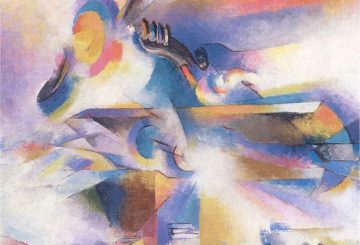It can sometimes be a little distasteful to toot your own horn in public but what the hell… Back on March 30 while we were discussing the Craig Ruddy Archibald win, we thought of a problem that could arise for the AGNSW and Ruddy:
“Ruddy’s picture’s main drawback is that it’s drawing, not a painting. We haven’t really looked at the rules lately but we thought that this was a competition for painting, right? We were wondering if some aggrieved artists might start a class action lawsuit against the gallery to have it awarded to someone who has done an actual painting. Who knows? It could happen. We’re not down on the idea that a drawing can win – we’re happy to see the rules bent in favour of a good work – but it’s just confusing when a cat wins a dog show.”
Well, it seems the cats have come home to roost, so to speak. A Sydney artist Tony Johansen, backed with a fighting fund from aggrieved artists, has launched a legal challenge to the prize claming that the Ruddy painting is a drawing, not a painting, and should be disqualified.
Both The Daily Telegraph and The Sydney Morning Herald have both posted stories. Sky News even has a poll!
As The Daily Telegraph reported:
“[Johansen’s] barrister Malcolm Duncan will argue the Gulpilil portrait is not a painting but a charcoal drawing.
“Two other Archibald art work finalists – Richard Bell’s image of Ned Kelly’s mask and Paul Worstead’s image of a rabbit – will be cited as examples that also allegedly breach the terms of the competition.
“A fourth portrait will also be named as being outside the rules because it was allegedly produced by someone living outside Australia. Mr. Ruddy could not be contacted yesterday.”
Meanwhile the SMH has given us some precedents to consider while Jan Batten, the AGNSW’s über-publicist, foreshadowed the possible legal defence if the case ever goes to court:
“Johansen said: “This is a drawing, it is as simple as that. Craig Ruddy winning the prize this year is the equivalent of my entering a painting of a sculpture in the Dobell Drawing Prize and winning it.”
[…]
Jan Batten, a spokeswoman for the NSW Art Gallery, said the gallery had no comment “at this stage”, nor had Ruddy, except to say Section 14 of the conditions of entry for the prize said the entries could be in “oil, acrylic, watercolour [or] mixed media”.
If the legal action proceeds, it will add to the history of controversy that has dogged the prize since it was first awarded in 1921. The most famous controversy was over the 1943 entry, William Dobell‘s portrait of Joshua Smith, which was claimed to be a caricature. Dobell survived the challenge.
In 1975 John Bloomfield won with a portrait of film director Tim Burstall, but the prize was withdrawn when it was revealed he had done the painting from a photograph and not from life.
In 1981 Eric Smith won with a portrait of art gallery owner Rudy Komon and survived a challenge although it was shown the painting was virtually identical to a photo.”
As we seem to be on something of a roll at the moment with predictions, we’re going out on a limb and stating for the record that the case won’t get to court and if it does, Johansen will lose.
Unfortunately for Johansen and very lucky for Ruddy, is that the legal argument would most likely be in one of two possible areas: although there does seem to be a clear breach of the rules turning on the meaning of the word painting the problem is arguing against the idea of what constitutes multi media.
With reference to the Archibald, you would think multimedia would mean anything in addition to the conventional paint on canvas (like the classic works of Keith Looby where things were added on as extra sculptural features or with paintings by Brett Whiteley that included drawing). The AGNSW legal team would argue that the use of multi media would be permisable in addition to painting, as well as instead of… meaning that the prize for “portrait painting” is a prize for a “portrait” done in any medium.
The other possible argument would be that the trustees had failed in their duty to apply the rules fairly to the judging – a more damaging argument but one far more difficult to prove.
Johansen’s case would have to rest on the first argumnent – as supported by the inclusion of other doubtful ‘paintings’ – and would seem to follow precedent in cases like this where the argument to a judge is that a body of works represents a clear contradiction of a definition (in this case ‘painting’ vs ‘multimedia’) and that Johansen and others have been denied justice under the competition rules.
Another more pressing problem for Johansen are the deep pockets of the AGNSW, its benefactors and trustees. If Johansen’s barrister Malcom Duncan is working gratis then there’s a possibility the case could get to court but the chances of it being resolved successfully on arguments of definition are slim and would be a very expensive to sustain.

